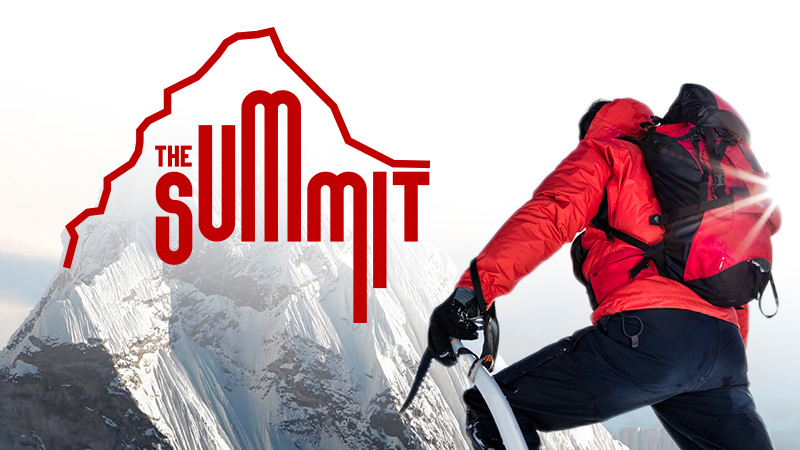Articles
Materials
Materials
Playlist
10 Videos

1:01:02

14:05

12:28

2:48

1:05

2:47

11:18

11:48

5:14
I. Game Concept
A. Overview
“The Summit” is a first-person hiking and survival game set on Mount Everest. Players take on the role of climbers attempting to reach the summit while navigating challenging terrain, harsh weather conditions, and managing essential resources.
B. Key Features
- Realistic Climbing Mechanics
- Dynamic Weather System
- Oxygen Management
- Strategic Resource Planning
- Day-Night Cycle
- Survival Elements
- Difficulty tiers corresponding with historical events.
II. Gameplay Mechanics
A. Climbing Mechanics
Climbing Controls:
- Intuitive controls for navigating steep slopes, ice walls, and crevasses.
- Implement a stamina system for physically demanding actions.
Weather Impact:
- Dynamic weather conditions affect visibility, grip, and overall climbing difficulty.
Altitude Simulation:
- Realistic altitude simulation influencing player movement, health, and decision-making.
B. Resource Management
Oxygen Levels:
- Oxygen tanks deplete with altitude gain; players must manage supply strategically.
- Acquire additional oxygen from camps or rescue missions.
Food and Nutrition:
- Plan and consume a variety of foods to maintain energy levels.
- Factor in weight and nutritional value when selecting food items.
Equipment Wear and Tear:
- Introduce a wear and tear system for gear, requiring maintenance or replacement.
C. Environmental Challenges
Dynamic Weather:
- Weather changes impact climbing conditions and player visibility.
- Implement storms, snowfall, and clear skies for diverse challenges.
Day-Night Cycle:
- Realistic day-night cycle affecting temperature, visibility, and climbing difficulty.
D. Exploration and Navigation
Route Planning:
- Provide a map for players to plan and adjust their climbing route.
- Discover alternate paths, shortcuts, and hidden areas.
Checkpoints and Camps:
- Designate key checkpoints and camps as safe havens for rest and resource replenishment.
E. Difficulty Tiers
Historical Challenge Tier:
- Recreate the conditions and challenges faced during the first ascent in 1953.
- Limited knowledge, basic equipment, and uncharted routes.
Survival Challenge Tier:
- Reflecting the difficulties of the 1996 disaster.
- Unpredictable weather, communication issues, and crowded routes.
Pioneering Achievement Tier:
- Emulating the spirit of Junko Tabei’s 1975 solo ascent.
- Breaking gender barriers and solo climbing challenges.
Extreme Endurance Tier:
- Following in the footsteps of Reinhold Messner’s 1980 solo ascent without supplemental oxygen.
- High-altitude challenges, mental resilience, and solo climbing.
Experience Mastery Tier:
- Modeled after Apa Sherpa’s 2012 record.
- Climbing Everest multiple times, managing changes in the environment, and demonstrating accumulated knowledge.
III. User Interface (UI)
- Altitude Meter
- Temperature Gauge
- Oxygen Level Indicator
- Health and Stamina Bars
- Weather Conditions
- Navigation Map
- Backpack Inventory
- Clock and Time Remaining Indicator
- Wind Speed Gauge
- Sun Position Indicator
- Short-Term Weather Forecast
- Save/Load, New Game, Quit, Settings, Screenshot Gallery
- Difficulty Tiers
IV. Art and Aesthetics
Realistic Environment:
- High-quality graphics depicting the stunning but treacherous Everest landscape.
- Varied environments, from icy cliffs to snow-covered plateaus.
Character Design:
- Detailed character models with customizable gear and equipment.
Dynamic Weather Effects:
- Visual effects for rain, snow, wind, and other weather conditions.
V. Sound Design
Immersive Soundscapes:
- Ambient sounds reflecting the mountain environment, including wind, avalanches, and wildlife.
- Climber’s breathing and footsteps adjust based on altitude and exertion.
Ambiant Music:
- Dynamic music that intensifies during challenging climbs and relaxes, almost meditational during moments of rest.
VI. Progression and Challenges
Skill Progression:
- Climbers gain skills and abilities as they ascend, improving their chances of reaching the summit.
Random Events:
- Introduce unexpected challenges, such as avalanches or equipment malfunctions.
Dynamic Endings:
- Multiple endings based on player decisions, climbing performance, and resource management.
VII. Platform and Technical Considerations
Platform:
- Initially designed for PC and consoles with potential for mobile adaptation.
Game Engine:
- Unreal Engine 5 or equivalent for realistic graphics and dynamic weather systems.
VIII. Marketing and Monetization
Target Audience:
- Outdoor and adventure game enthusiasts, simulation gamers, and those interested in survival mechanics.
Monetization:
- Initial purchase with potential for additional content, such as new climbing routes or equipment packs
